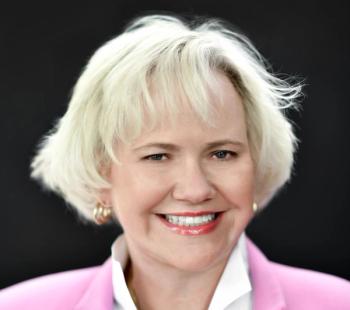
In Oregon, a nurse staffing law is now in effect. Will it happen nationwide?
The Oregon measure sets minimum levels in all hospitals. Other states are looking at nurse staffing levels, and lawmakers in Congress have introduced legislation.
In Oregon, a landmark law establishing minimum staffing standards for nurses is now in effect.
Oregon Gov. Tina Kotek signed the legislation on Aug. 15, and the measure takes effect as of Sept. 1. There are key provisions that will take effect in the coming months, such as rulemaking and a process to handle complaints. Nurse staffing ratios won’t formally be in place until June 2024.
But the law is on the books, and Oregon nurses are calling it a game-changer. Matt Calzia, director of nursing practice and professional development for the Oregon Nurses Association, said the law provides important protection for nurses and patients.
“This law gives us a baseline,” Calzia tells Chief Healthcare Executive®. “It says, no nurse may be assigned more than ‘X’ number of patients. So now we have at least a place to start from and build from.”
Oregon’s nurse staffing law sets the state apart from most of the country.
California first established some minimum staffing requirements for nurses, but those were put in place at the regulatory level and not through legislation. In New York, then-Gov. Andrew Cuomo signed a law in 2021
But Oregon’s law spells out minimum staffing levels for registered nurses at all hospitals, and in all departments of the hospitals.
The law sets forth different staffing standards for nurses in different roles. For those in the emergency department dealing with trauma patients, the staffing ratio calls for one registered nurse per patient, while there is one RN for every two patients in the intensive care unit. The law sets forth a ratio of one registered nurse for every three patients in intermediate care units, and one RN for every four non-trauma patients in the emergency department.
Hospitals that don’t comply could face fines beginning in June 2025, under the new law.
It’s worth noting that the Oregon Hospital Association backed the minimum staffing law, which Calzia said was a significant step in ensuring its passage.
“We had support from the hospital association,” Calzia says. “They weren't just neutral. They didn't fight it. They actually supported the passage of this.”
The move also comes as
Leaving the ‘buddy system’
Calzia also notes that many hospitals typically maintain staffing levels spelled out in the new law.
“The staffing levels aren't different than what hospitals in Oregon are doing now,” he says.
However, the law does ensure that hospitals will move away from the “buddy system,” a sore point for nurses.
Typically, if a nurse takes a break for a meal during a shift, another nurse must monitor that nurses’ patients. So one nurse ends up watching two sets of patients or, quite commonly, nurses on 12-hour shifts aren’t taking breaks, Calzia says.
“Nurses will forego their breaks because they know when they go on break, work doesn't get done,” Calzia says.
Moving away from the “buddy system” will do more than make the job easier for nurses, Calzia says. It’ll provide better care for patients.
“When nurses go on break, the care just doesn't happen,” he says.
Under the new law, “a nurse isn't going to have to double their workload so another nurse can take a break," Calzia says. "It's gonna be a big, big cultural shift for a lot of nurses and I think that is something that needs to be addressed nationwide.”
More legislation
U.S. Sen. Sherrod Brown, D-Ohio, and U.S. Rep. Jan Schakowsky, D-Ill., have introduced
“Nurses work long hours doing vital work in our healthcare system, but too often they’re stretched too thin, caring for too many patients with too little support,” Brown said in a
The American Association of Critical-Care Nurses released a report in August 2022 that found
In contract disputes, Calzia says staffing is among the two biggest issues for nurses.
“In hospitals, where the majority of our members work, that tends to be the thing that's causing the highest levels of burnout or moral injury, the reason nurses leave the bedside,” Calzia says.
“Hopefully this law does mitigate some of that,” he adds.
Lawmakers in other states have debated bills to improve nurse staffing. In Washington state, Gov. Jay Inslee signed a bill in April that requires hospital committees to set staffing, and enables state regulators to issue corrective action plans that could include fines. A Minnesota bill that would have required hospitals to create staffing committees died in the legislature in May. The Pennsylvania House of Representatives approved a staffing bill in June, but it still has to get through the state Senate.
Kevin Mahoney, CEO of the University of Pennsylvania Health System, has spoken out in favor of minimum nurse staffing levels. In an
“We believe safe staffing standards will help to relieve nurse burnout, improve care for patients and create better work environments to attract and retain dedicated frontline caregivers,” Mahoney wrote.
Calzia encourages nursing organizations in other states to work with lawmakers, and hospital organizations, in crafting legislation to establish staffing levels for nurses. He says it’s time to move past the arguments that staffing solutions don’t require regulation and talk about the reality of the difficulties of nurses at the bedside.
“Healthcare leaders are going to just acknowledge that this is one of the things that needs to happen to start repairing our broken healthcare system,” Calzia says. “And folks who are administrators and stuck to the status quo … they're gonna keep facing the same problems of high turnover, really struggling to meet the needs of their community.”
While he anticipates some health systems may push back against minimum staffing ratios for nurses elsewhere, Calzia says, “Communities are going to support it.”























































































